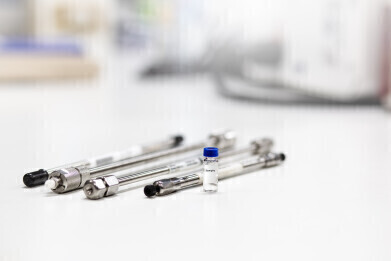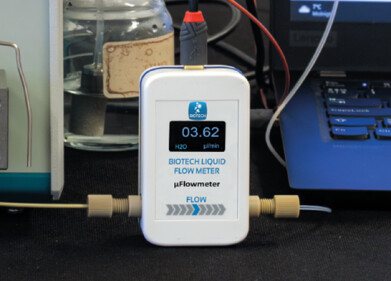HPLC, UHPLC
Unveiling the Potential: Maximising the Performance of Core-Shell Columns
Oct 25 2023
Core-shell columns have emerged as a game-changer, revolutionizing the separation and analysis of compounds. These columns possess a unique structure that combines the efficiency of solid-core particles with the high surface area of porous shell materials. The result? Enhanced separation capabilities, reduced analysis time, and improved sensitivity. However, to truly unlock their potential, scientists and researchers must be equipped with knowledge and techniques to maximise the performance of core-shell columns.
First and foremost, it is crucial to choose the right core-shell column for the intended application. With various particle sizes, pore sizes, and stationary phases available, selecting the optimal column is essential. A thorough understanding of the compounds being analysed, their properties, and the separation requirements will guide this decision. Consideration of factors like retention, resolution, and selectivity is paramount.
Temperature control plays a pivotal role in core-shell column performance. Maintaining a stable temperature is crucial for consistent and reproducible results. Most core-shell columns operate efficiently at moderate temperatures, but selecting the appropriate temperature for your analytes can make a substantial difference. Experimenting with different temperature settings can lead to improved separation and peak shape.
Another key aspect is the mobile phase. It's essential to select the right solvent and adjust its composition, pH, and additives as needed. Mobile phase optimisation can significantly impact resolution and selectivity. For instance, by altering the mobile phase gradient, researchers can fine-tune separation parameters and obtain sharper peaks.
Flow rate is yet another vital parameter. While core-shell columns can tolerate higher flow rates due to their superior efficiency, it is essential to find the balance between speed and performance. Running the column at excessively high flow rates can lead to compromised resolution and peak distortion. Careful optimization of flow rates can yield excellent results.
Routine maintenance and column care are often underestimated. To ensure prolonged column life and consistent performance, regular cleaning and conditioning are essential. Flushing the column with appropriate solvents, checking for blockages, and following manufacturer guidelines for column care are simple yet effective ways to maximise performance.
Moreover, advancements in instrument technology can further enhance core-shell column performance. Upgrading to modern instruments with precise control over temperature, pressure, and flow rate can provide researchers with more flexibility and control.
By understanding the nuances of column selection, temperature control, mobile phase composition, flow rates, and proper maintenance, researchers can harness the full potential of these columns. The benefits of enhanced separation, reduced analysis time, and improved sensitivity are within reach for those who take the time to optimise their chromatographic methods.
More information online
Digital Edition
Chromatography Today - Buyers' Guide 2022
October 2023
In This Edition Modern & Practical Applications - Accelerating ADC Development with Mass Spectrometry - Implementing High-Resolution Ion Mobility into Peptide Mapping Workflows Chromatogr...
View all digital editions
Events
ACS National Meeting - Fall 2024
Aug 18 2024 Denver, CO, USA
Sep 04 2024 Chiba, Tokyo, Japan
Sep 04 2024 University of Warwick, Coventry, UK
Sep 10 2024 Rockville, MD, USA
Plastics Recycling World Expo Europe
Sep 11 2024 Brussels, Belgium














